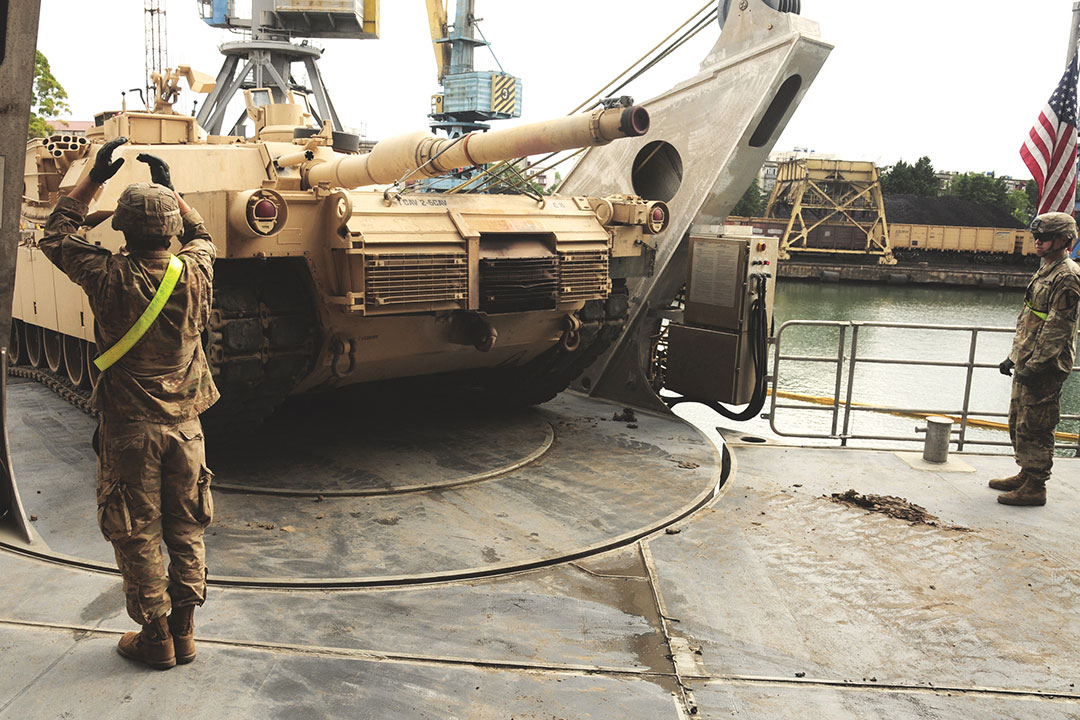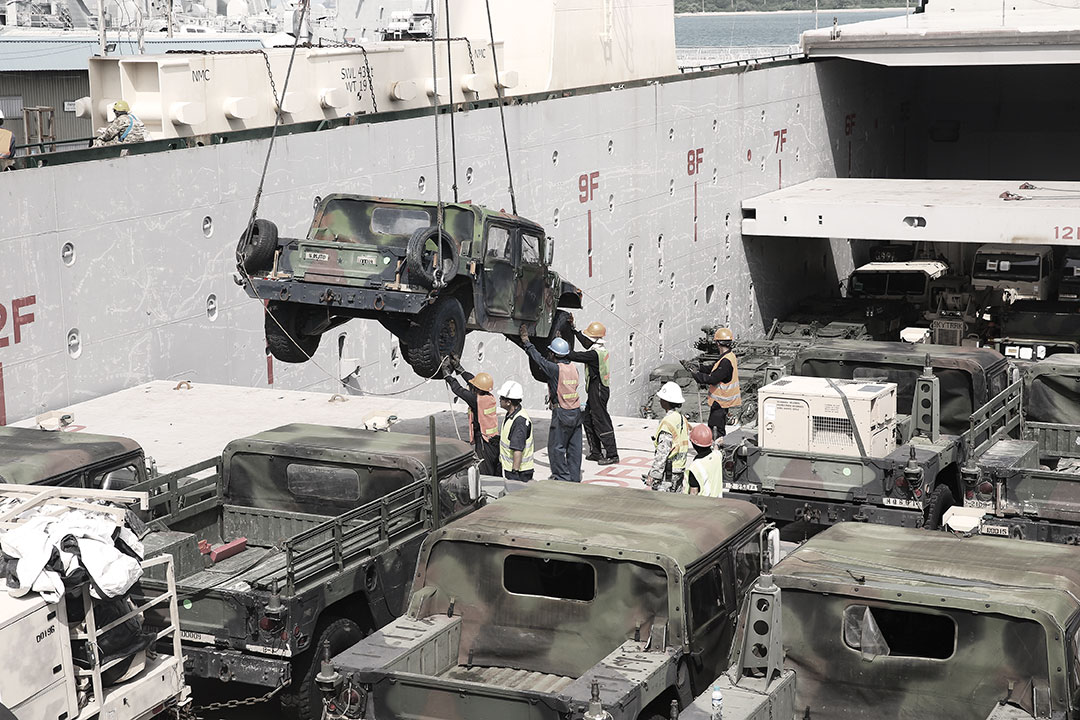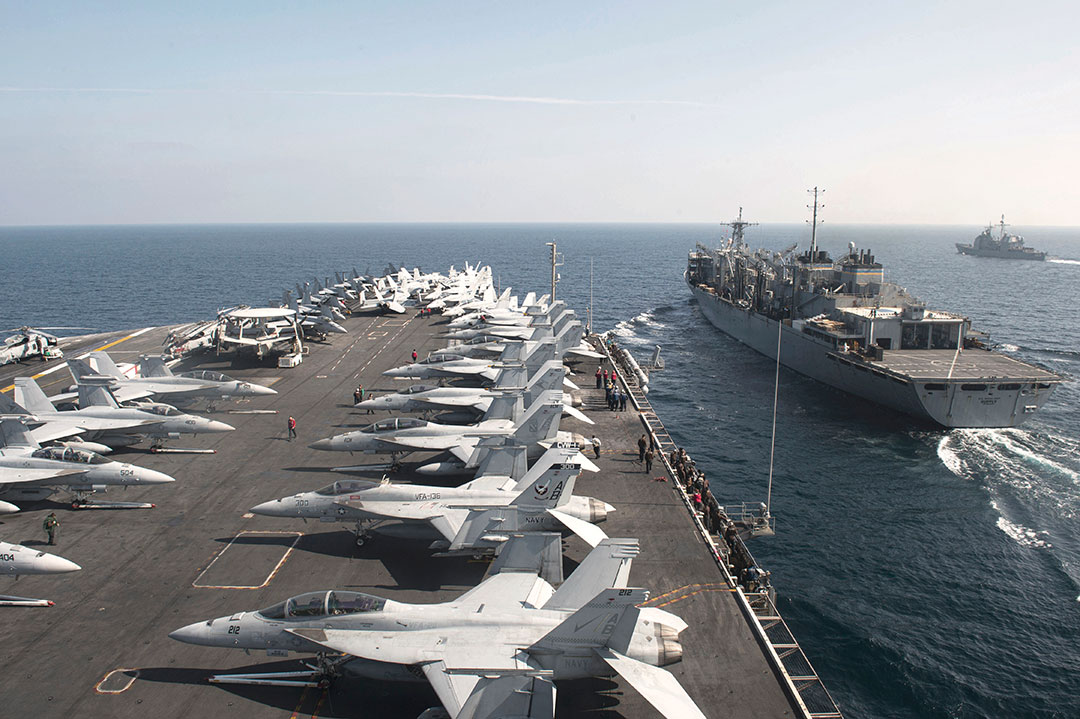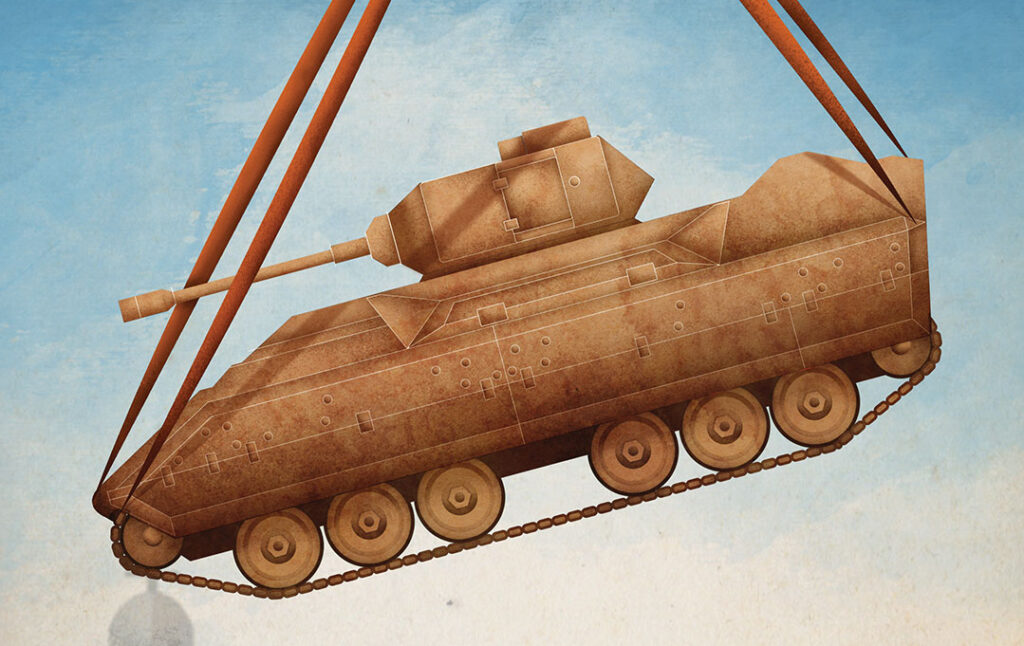Energy generation, resilience are key challenges for military logisticians
THE WATCH Staff
As the U.S. and its allies prepared to invade Iraq in 2003, nearly 85,000 pieces of cargo and 4,000 containers of ammunition were loaded aboard ships headed for Kuwait from November 2002 to May 2003. The military cargo — enough to fill the deck space of 58 Nimitz-class aircraft carriers — included Abrams battle tanks, Bradley fighting vehicles, Humvees and helicopters. Although the logistical immensity of the six-month buildup was staggering, experts say it pales in comparison to the logistics demands of the future. In future battles, U.S. forces likely would face more technologically sophisticated adversaries, creating environments where military hardware is difficult to protect and communications networks and power supplies can’t be taken for granted.
In Operation Iraqi Freedom, the U.S. and its partners did not have to “fight their way to the fight,” wrote retired U.S Marine Corps Lt. Gen. John E. Wissler in an October 2018 essay for The Heritage Foundation. “Additionally, U.S. and partner-nation forces had significant time to deploy military capability, ultimately using a single point of entry with mature facilities and infrastructure and Internet access.”
In future engagements against sophisticated adversaries, such as the People’s Republic of China or Russia, the U.S. and its partners could be forced to battle in environments where communications are degraded and where the supply chain must be decentralized and more maneuverable, Wissler wrote.

Protecting the Energy Supply
The U.S. National Defense Strategy requires all services to field ground, air, sea and space forces that can operate, survive and regenerate in all domains while under attack. It’s a policy that requires the military to create, distribute and protect energy supplies, defense scholar Mackenzie Eaglen said. Artificial intelligence (AI), big data, robotics and machine learning could revolutionize how future wars are fought, Eaglen said, emphasizing that these technologies all have one critical enabler — electricity. “The military needs a lot more quality energy to power next-generation platforms, sensors, robots, AI and directed-energy weapons for long periods of time,” Eaglen, a resident fellow at the American Enterprise Institute who specializes in defense strategy, defense budgets and military readiness, wrote in a January 2020 article for The National Interest magazine.
U.S. Navy officials say they are considering digital “twinning” to create utility and telecommunications replicas for the Pentagon; stationary microreactors for long-term energy resilience; and collaboration with industry to develop small-cell technology and a 5G network for the military.
When evaluating the security of energy resources, three key issues must be addressed, Eaglen told The Watch. “First, there is the type of energy generation that is used for installations,” Eaglen said. “This is the most straightforward category, and it encompasses things like generators, reactors, etc. New technology isn’t necessarily needed, just more capacity. Investing in new equipment, like miniature nuclear reactors, could help the U.S. military decrease its dependence on outside utilities.”
Energy distribution is another logistical challenge. “It doesn’t matter if a nuclear power plant is located near a military base if that base can only connect to the power plant via a USB charger,” Eaglen said. “The USB cable cannot deliver enough energy from the plant to power an entire base — even if the energy reservoir is plentiful.” This is particularly important for military installations that depend on outside generators and plants, she said.
A third consideration is the need to boost power-generating capacity across military platforms. She pointed to the M1 Abrams tank as an example. New auxiliary power units were installed on the Abrams, “partly because its existing electrical systems failed to fully support the electronics that have been used since the base M1 model,” creating a power distribution problem. One of the important challenges the U.S. Navy faces, she said, is that with “railguns and directed energy laser technology, there’s not enough energy available on fleet ships to power these applications. That’s an example of a power generation problem.”

Building Energy Resilience
These logistical challenges have military planners in the U.S. and abroad working diligently to find solutions. U.S. Marine Air Corps Station Miramar, which is just north of San Diego, California, stands out as an example of what energy resilience looks like. The air station received an environmental achievement award in 2019 from the U.S. Department of Defense for establishing power systems that can run for up to three weeks when disconnected from the electrical grid. Miramar constructed a U.S. $20 million stationwide microgrid that provides 100% renewable energy. The microgrid builds upon energy sources already on the base, including solar power and energy generated from methane gas at landfills. The microgrid supplies backup power and helps the air station reduce utility charges.
Although Station Miramar stands out for its energy resilience, “it’s not unreasonable to think that many bases can’t operate for even a day or two without an outside power supply,” Eaglen said. “The Pentagon will have to work with outside partners on this massive effort, not compete with them.” That means defense planners in the U.S. and globally need to work with electricity suppliers, telecommunications networks and water providers to build energy resilience in an environment where access to these resources could be limited or cut off.
Getting to the Fight
Energy resilience is only one of many challenges facing military logisticians. If a conflict breaks out abroad, the military must transport many tons of equipment and personnel to the battleground. In a crisis, nearly 90% of all U.S. Army and Marine Corps equipment would be carried by ship, according to defense planners. With this requirement in mind, the U.S. military in September 2019 ordered the largest stress test of the Military Sealift Command and Maritime Administration in history, activating 33 out of 61 government-owned ships simultaneously. Overall, only about 41% of the ships were fully ready to support a major sealift operation, which demonstrated the need for more investment.
The urgency of investing in the sealift fleet has been on the radar of U.S. military commanders for some time. In March 2019, U.S. Navy Adm. Philip S. Davidson, commander of U.S. Indo-Pacific Command, told the U.S. House Armed Services Committee that Congress must invest more to keep these ships afloat. “Clearly, recapitalization of our sealift system is going to be critically important, as it’s aging out and really has propulsion plants that [are] expiring in capability and our ability to maintain them,” Davidson said. “It’s [a] risk to our troops and all of our people that are forward in the region if there is any delay in our ability to deliver the logistics in accordance with the [operation] plans.”

Although the Navy has plans to build new sealift ships, it also has discussed buying more on the open market and retrofitting them to meet the military’s needs. In addition to the government-owned ships, the Military Sealift Command relies on 125 civilian-crewed surface vessels averaging about 50 years old to replenish Navy ships, conduct specialized missions, and transport personnel, cargo and supplies, according to a news release from the U.S. Department of Defense. “It’s very hard to conduct service-life extensions on a ship that is that old,” said Army Gen. Stephen R. Lyons, commander of U.S. Transportation Command. “What we are finding is the money that is provided against it is woefully insufficient to come back out of the shipyard in a ready status.”
Lyons said he thinks purchasing used ships to augment the fleet is a good solution. “Congress has granted us the authority — granted the Navy the authority — to purchase seven used ships on the open market,” he added. By the end of 2020, the military expects to buy the first two. The Navy’s Military Sealift Command also has prepositioned 15 ships fully loaded with equipment and supplies near likely war zones to reduce response times, according to a January 2020 report in Forbes magazine.

Where Wars Are Won
Military history is replete with quotes from generals about the essential nature of sound logistics. Napoleon Bonaparte famously uttered: “The amateurs discuss tactics; the professionals discuss logistics.” In more modern times, Gen. Dwight D. Eisenhower, who would later become the 34th president of the United States, stated, “You will not find it difficult to prove that battles, campaigns and even wars have been won or lost primarily because of logistics.”
Core logistics functions include the acquisition and distribution of military equipment; the provision of medical services; acquisition of facilities; the provision of food, water and sanitation to the troops; and coordination with overseas partners. Logistics touches every aspect of military might, which is why the U.S. and its partners worldwide are investing the time and money needed to stay one step ahead of their adversaries. “Logistics is the oxygen that allows military muscle to function, grow, and strengthen,” Wissler wrote. “Just as DNA represents the fundamental and distinctive characteristics or qualities of someone or something, logistics planning and modernization define the distinctive characteristics or qualities of the military force and ultimately provide the military commander the freedom of action, endurance and ability to extend operational reach that are necessary to achieve success.”

